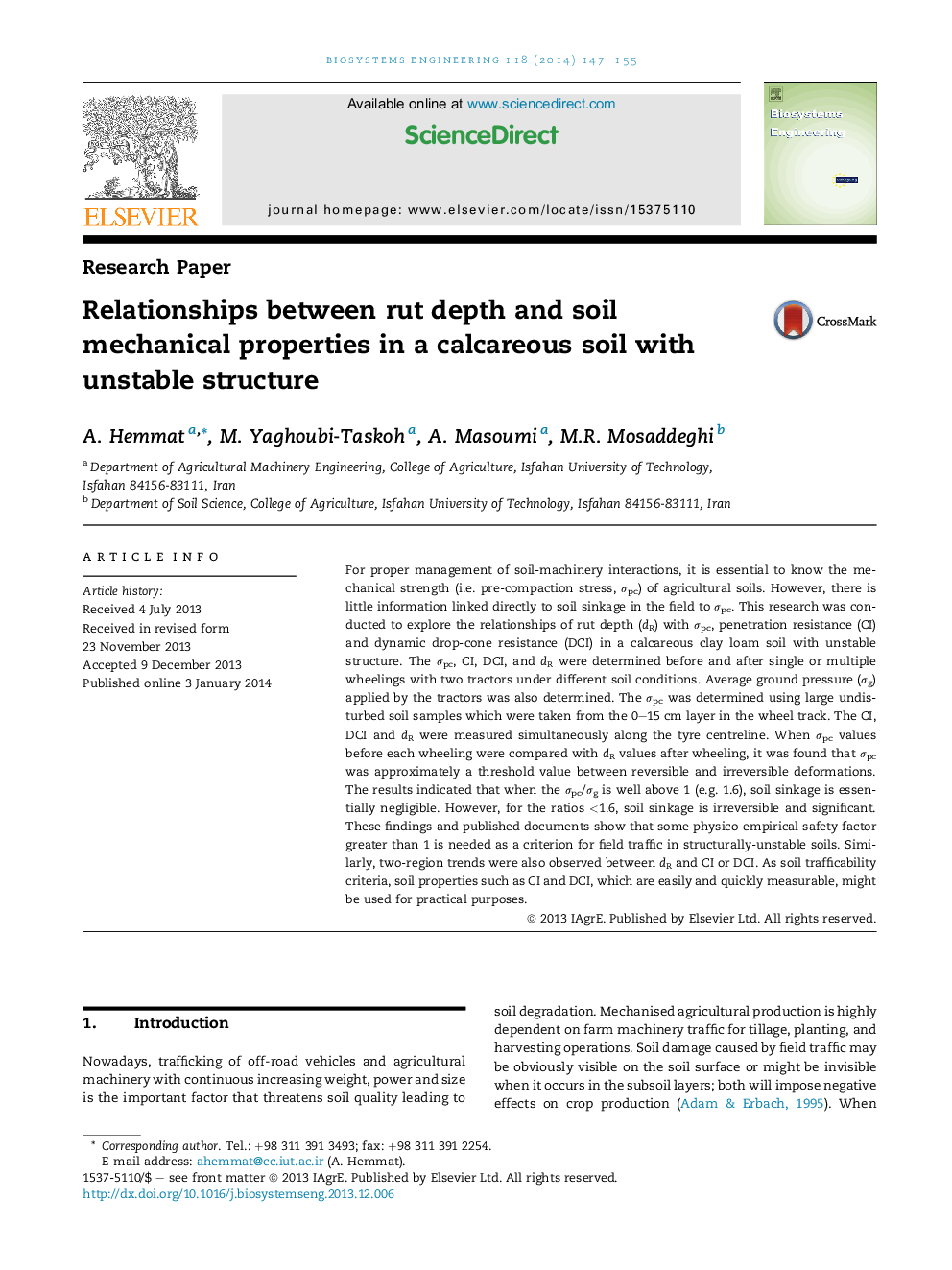| Article ID | Journal | Published Year | Pages | File Type |
|---|---|---|---|---|
| 1711216 | Biosystems Engineering | 2014 | 9 Pages |
•For pre-compaction stress/average ground pressure >1.6, soil sinkage is negligible.•For the ratios <1.6, soil sinkage is irreversible and significant.•Cone index (CI) might be used as a criterion for soil trafficability.•As an approximation, CI is ten times the pre-compaction stress.
For proper management of soil-machinery interactions, it is essential to know the mechanical strength (i.e. pre-compaction stress, σpc) of agricultural soils. However, there is little information linked directly to soil sinkage in the field to σpc. This research was conducted to explore the relationships of rut depth (dR) with σpc, penetration resistance (CI) and dynamic drop-cone resistance (DCI) in a calcareous clay loam soil with unstable structure. The σpc, CI, DCI, and dR were determined before and after single or multiple wheelings with two tractors under different soil conditions. Average ground pressure (σg) applied by the tractors was also determined. The σpc was determined using large undisturbed soil samples which were taken from the 0–15 cm layer in the wheel track. The CI, DCI and dR were measured simultaneously along the tyre centreline. When σpc values before each wheeling were compared with dR values after wheeling, it was found that σpc was approximately a threshold value between reversible and irreversible deformations. The results indicated that when the σpc/σg is well above 1 (e.g. 1.6), soil sinkage is essentially negligible. However, for the ratios <1.6, soil sinkage is irreversible and significant. These findings and published documents show that some physico-empirical safety factor greater than 1 is needed as a criterion for field traffic in structurally-unstable soils. Similarly, two-region trends were also observed between dR and CI or DCI. As soil trafficability criteria, soil properties such as CI and DCI, which are easily and quickly measurable, might be used for practical purposes.
